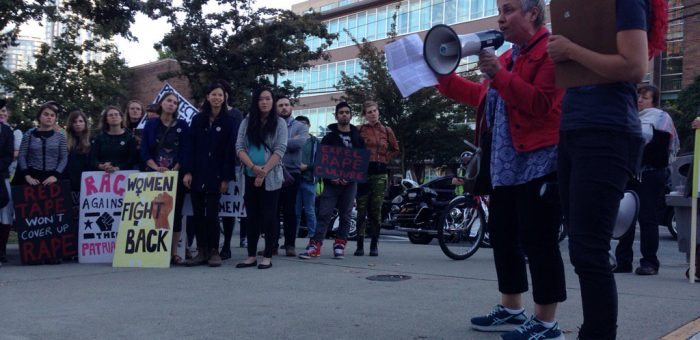Health
Let’s explore the concept of basic income: Please let me know what you think
Over the next few weeks I will explore the concept of “Basic Income”. I would be most grateful if you would share your comments, suggestions and concerns with me about this topic as we unpack what it all means in a series of upcoming posts. In this first post we simply provide a backgrounder.
1. What is “Basic Income”?
A basic income is a regular payment that the Government makes to individuals or families in its jurisdiction, which is not contingent on recipients fulfilling specific criteria (e.g. proving that they are active job seekers).
Basic income comes in two basic forms: means-tested and universal. In its means-tested form, a basic income is paid only to those whose income from other sources falls below a predetermined threshold, but is not contingent on recipients’ willingness to work. It is often referred to as “guaranteed minimum income”. In its universal form, a basic income is paid to all, irrespective of income from other sources. The unconditional basic income is often referred to as “universal basic income” or a “citizen’s’ wage”.
The idea of a basic income has become more popular recently, and has garnered support from across the political spectrum. In Canada, Ontario is planning a pilot next year, and Quebec, Alberta, and PEI have also raised the possibility of running pilots in the near future. Internationally, Finland and the Netherlands are both staging large-scale pilots in 2017.
2. Background
a. Poverty and Inequality in BC
The levels of poverty and inequality in BC are high relative to the national average. BC has higher than average rates of poverty, with poverty rates up to 16% and child poverty rates up to 20%, depending on the poverty measure used. BC also has one of the highest levels of inequality in Canada, estimated to be second only to Alberta.
For those needing support, our current system of social programs has a number of shortcomings. The siloed approach, with a myriad of different programs with specific eligibility criteria, allows people to slip through the cracks in the system and leaves many unsure which benefits they are eligible for. It also has a substantial administrative cost. There is significant stigma in collecting welfare today, and many argue that the invasiveness of the current approach, with its stringent conditionality and reporting requirements, strips recipients of privacy and dignity. Additionally, the current system may provide a disincentive for many to join the workforce, due to how quickly the benefits are reduced as any income is earned.
b. A Shifting Economy
Unprecedented technological advance, of rapidly increasing pace, is set to have a significantly disruptive effect on our economy. To now, we have seen deindustrialization and the closure of industries, together with a boom and bust economy in British Columbia that almost defines much of provincial economic history. With increasing automation, forecasts suggest the potential for the rapid elimination of jobs across a wide range of sectors. Automated voice recognition software is already replacing many call centre workers, car assembly plants use more robots than people, and driverless cars and trucks are already significantly impacting the taxi and trucking industries. The effects of automation are predicted to be most strongly felt in moderate and low-paying jobs: Barack Obama’s 2016 economic report predicted that jobs paying less than USD$20/hour face an 83% likelihood of being automated, while jobs paying between $20 and $40/hour face a 33% chance. In the UK, one third of retail jobs are forecasted to be replaced by 2025. The effects of automation are predicted to spread to higher paying professional sectors as well, particularly the medical and legal professions. Technological advance has been attributed as a cause of increasing inequality by a number of economists because of automation’s effects on jobs and technology’s role in further concentrating the accumulation of wealth in the hands of top earners.
We are also heading toward what is commonly termed the ‘gig’ economy. We are shifting away from the 20th century model of permanent full-time work with benefits toward precarious contract-based work, which is spreading at an increasing rate to workers at all levels of education, trade, skill and profession. Contract-based employment means employers, with an expanding labour pool, can negotiate pay, usually with few or no benefits, outside of union negotiated packages. Examples today include Uber drivers, health care assistants, and sessional lecturers at postsecondary institutions.
3. Potential Effects of a Basic Income: Opportunities and Challenges
Perhaps the most transformational promise of a basic income is its potential to raise recipients out of poverty. Living in poverty takes a significant toll, and the elevated levels of stress that it brings are associated with higher levels of alcohol and drug abuse, domestic abuse, and mental health problems. Those living in poverty are more likely to have inadequate nutrition, use tobacco, be overweight or obese, and be physically inactive. The adverse effects of growing up in poverty on a child’s ability to be successful in school and integrate into the workforce contribute to generational poverty.
The moral case for tackling poverty is self-evident: doing so would have a life-changing effect on the lives of those currently living in poverty and dealing with the problems it brings on a daily basis. The financial cost is also significant: the adverse outcomes of poverty lead to increased use of public health care, more hospitalizations, and lost economic activity, among other effects.
A pilot project undertaken in Manitoba in the 1970s suggests that a basic income policy can have significant impacts on the healthcare system: providing a basic income to residents of Dauphin, Manitoba for 3 years reduced hospital visits by 8.5%. The decrease in hospital visits was attributed to lower levels of stress in low income families, which resulted in lower rates of alcohol and drug use, lower levels of domestic abuse, fewer car accidents, and lower levels of hospitalization for mental health issues.
A basic income could also provide a means to respond proactively to the changes we are just beginning to see in the labour market. As the effects of automation are realized, providing a basic income would enable those affected to retrain for new professions, attend or return to University or College, take entrepreneurial risks, contribute to their communities or other causes through volunteering and civic engagement, and invest time in their families.
A challenge in considering a basic income scheme is predicting its effects on the labour market, specifically the extent to which it might provide a disincentive to work comparable to or stronger than the disincentive often associated with our current social assistance programs. The Dauphin, Manitoba pilot study provides some initial information on this question: it was found that the negative effect on people’s willingness to work was minimal for the general population, but more pronounced for mothers with young children, and teenagers aged 16-18 who completed high school instead of leaving to join the workforce.
A recent report by the Vancouver Foundation advocates paying all youth ages 18-24 transitioning out of foster care a “basic support fund” of between $15,000-$20,000. Doing so, they estimate, would cost $57 million per year, whereas the cost of the status quo is between $222-$268 million per year, due to the range of adverse outcomes that affect youth in transition, including intergenerational poverty, criminal activity, substance abuse, lost educational opportunities, and homelessness. Thus they estimate that establishing a basic support fund for youth in transition would result in savings to the Provincial Government of $165-$201 million per year.
The cost of a basic income program is difficult to predict, and estimates range widely according to assumptions made about the characteristics of the program and its social and economic effects. In costing a basic income it is important not to ignore the cost of the status quo: the direct costs of unemployment, poverty, and homelessness as well as the costs of managing the adverse effects. Nonetheless, the cost of a basic income program to BC is potentially significant, and costs associated with different implementation options must be fully worked out and tested.
4. So what are your thoughts?
While I recognize that I’ve only provided cursory information to initiate this conversation, I would like to hear your thoughts on the idea of a basic income. Do you think a basic income policy holds promise as a potential way forward in BC, allowing us to tackle poverty effectively and prepare for a future in which the nature of work is vastly different from what we have known in the past? What are your concerns about the policy? How would you like to see it implemented? Thank you in advance for your comments.
Renewing Call to Reform Medical Service Premiums
Media Statement September 15, 2016
Andrew Weaver Renews Call to Reform Medical Service Premiums
For Immediate Release
Victoria, B.C. – While a freeze in Medical Service Plan (MSP) premium increases is certainly welcome, the government has lost the opportunity to fully reform this regressive tax says Andrew Weaver, MLA for Oak Bay – Gordon Head and Leader of the B.C. Green Party.
“British Columbians will see this MSP announcement for what it is, a cynical ploy to gain votes as we head into an election year”, says Andrew Weaver. “We need to eliminate the MSP, not simply tinker around its edges.”
“Over the last three years I have consistently and continually called for the MSP to rolled into the income tax system with premiums calculated on taxable income rather than the current system which is a flat tax no matter what people earn.” says Andrew Weaver. “This would turn a regressive tax into a fair system much like has already been done in Ontario”
In Ontario, if you earn $20,000 or more a year you pay the Ontario Health Premium (OHP). It ranges from $0 if your taxable income is $20,000 or less, and goes up to $900 per year if your taxable income is more than $200,600. Instead of the mail-out system we have in BC, the OHP is deducted from the pay and pensions of those with employment or pension income that meets the minimum threshold.
“Remember – only Ontario’s top earners are paying $900 per year. Right now people in British Columbia are paying $900 a year regardless of whether they earn $42,000 or $4,200,000 a year.”
“As Leader of the BC Green Party I can affirm that a B.C. Green Party government would eliminate the regressive monthly MSP premiums. Instead, a B.C. Green government would introduce a progressive system in which rates are determined by one’s earnings. And a net and substantive administrative savings to taxpayers would arise in rolling MSP premiums into the existing income tax system.” says Andrew Weaver
– 30 –
Background:
Call to eliminate MSP premiums:
Moving Forward with MSP premiums:
Media contact:
Mat Wright – Press Secretary, Andrew Weaver MLA
1 250 216 3382
mat.wright@leg.bc.ca
Take back the campus: A march to end sexualized violence
On Tuesday, the WAVAW Rape Crisis Centre held a rally in Vancouver to kick off the school year with a call for post-secondary institutions to address sexualized violence and support survivors on campus. I was invited to speak at the event but, unfortunately, was not able to make it over to Vancouver on that dat so I sent the organizers a copy of the speech I had prepared.
Below is a transcript of the speech that their Executive Director Irene Tsepnopoulos-Elhaimer graciously read on my behalf.
Text of Speech
 Please accept my apologies for not being able to participate in this important event in person today. I would have loved to attend but unfortunately I have commitments in Victoria.
Please accept my apologies for not being able to participate in this important event in person today. I would have loved to attend but unfortunately I have commitments in Victoria.
I am pleased to have been offered the opportunity to send along some information about the legislative progress that has been made relating to sexual assault policies over the past six months.
First, please let me provide some context on how I got involved with this topic – for most of my life I have either studied at or worked on university campuses around the world. For the last two decades, I have been a professor at the University of Victoria, the same university I attended as an undergrad in the 1980s.
My professional responsibilities are now largely centered around the legislature and my position as the MLA for Oak Bay – Gordon Head and Leader of the BC Green Party. But I still spend a great deal of time working with, and speaking to, students and young adults and have been absolutely sickened with the seemingly endless wave of stories about sexual assaults happening on and close to universities and other post-secondary campuses in B.C.
This past Spring I arrived back at my legislative office after a meeting in Vancouver to find my staff eagerly waiting for me with a campaign pitch and copies of Ontario legislation on their desks.
“Sexualized violence is a massive issue in B.C.”, they started, “and there is so much we can do to improve the situation – starting with colleges and universities.” One sentence in and I was on board. We immediately got to work, reviewed Ontario’s Action Plan to Stop Sexual Violence and Harassment, and drafted up a B.C.-version of their Sexual Violence and Harassment Action Plan Act.
We compiled a list of over 50 student societies, assault support centres, and key people across the province and contacted each one for input.
On March 8 I introduced Bill M205: Post-Secondary Sexual Violence Policies Act. The bill, based on similar legislation introduced in Ontario, was designed to address the pervasive occurrence of sexualized violence plaguing universities, colleges and other post-secondary institutions in British Columbia.
Noting that many post-secondary institutions lack sexual-assault policies, few have on-campus sexual assault crisis centres, and hardly any collect related incident data, the bill was designed to create a legal responsibility for universities and colleges to develop and maintain policies that would work to prevent the occurrences of sexual violence and provide support for victims.
The act would also require university and college-specific policies to be developed that would meet the needs of students, including education and protection, while working to create a safe environment for all students to come forward to report a sexual assault.
With an estimated one in three women and one in two transgender individuals experiencing sexual assault in their lifetime, this is a community issue that desperately needs to be addressed and post-secondary campuses present a unique opportunity to intervene.
The week after I tabled the Post-Secondary Sexual Violence Policies Act I followed up with the Premier in question period.
Noting that action on this issue was long overdue, she pledged to work with me to officially pass a version of my bill – urgently before the spring legislative session ended in May. I was thrilled with the progress on this pressing issue. I have since met with the Minister of Advanced Education to discuss next steps in moving this forward, and will continue to consult with students, survivors, support groups and university faculty and staff to make sure their voices are included as we build these laws. Sexualized violence in our communities is a huge problem, but it is important to remember that it is also a problem with incredible potential for progress.
With the start of the school year upon us it is important to remember that your universities and colleges are now legally obligated to develop and maintain policies that would work to prevent the occurrences of sexual violence and provide support for victims. These policies must be developed in consultation with the student body, and they need to be implemented by this coming Spring – one year from when the bill passed. If you feel that your school is not fulfilling their responsibilities, engage with your student society, ask the administration what policy progress has been made and how you can provide input to the policy development process. If you have additional concerns, you are always welcome to call my office at the legislature.
I am grateful to be able to work on this crucially important issue and owe a debt of gratitude to the incredibly courageous survivors of sexualized violence who have spoken out and help move us all forward.
Thank you for giving me the opportunity to provide a few remarks, I wish you all a successful and safe term!
Photos by Jeremy Lye
GMOs: An Update and Potential Ways Forward in BC
Introduction
Since writing our first backgrounder, we have continued to research the issues surrounding genetically modified foods, and the legislative options available in the BC context. The issue of GMOs is broad and complex and is tied to many larger questions including: our relationship to our food, the effects of large-scale conventional agriculture on human and animal health and the environment, population growth, global warming, industry funding of science, technological advance and its associated risks, and our ability to ensure a sustainable and secure food supply for the future. It is important to be cognizant of these broader issues in developing a response to GMOs, to ensure a well informed and holistic response that does not have unforeseen adverse consequences. We must also work within the context of BC, using the tools we have at our disposal to most appropriately and effectively respond to the issues and questions associated with GMOs.
Jurisdiction
Health Canada and the Canadian Food Inspection Agency (CFIA) share responsibility for food policies on health and safety, regulation, and labelling. The BC Liberal government has said that the responsibility for GM products rests solely with the Federal Government (see here and here and here).
However, in 2001, the BC NDP argued that GM labelling is a consumer information matter, which falls under provincial jurisdiction according to the Constitution Act (1867). During second reading of Bill 18 Genetically-Engineered Food Labelling Act, NDP Attorney General Graeme Bowbrick noted “The province has jurisdiction to legislate on a matter of property and civil rights, which is interpreted to include the authority to legislate with regard to consumer protection and consumer information.”
The Food and Agricultural Products Classification Act (2016) gives the Lieutenant Governor in Council the power to make regulations establishing or adopting certification programs, including making regulations respecting the quality standards of food or agricultural products. However, provincial certification will only apply to operators producing and selling their products within BC; those that sell their produce to other provinces will still require federal certification.
In order to fall within BC’s jurisdiction, the impact of any legislation must only be felt within BC and it must not have the effect of prohibiting or controlling the importation of goods into the province. Otherwise, legislation would infringe upon federal jurisdiction over inter-province trade and commerce and therefore be invalid.
Regarding pesticides, a province may prohibit the use of a registered pesticide, or it may add more restrictive conditions on the use of a product than those established under the Pest Control Products Act. This may provide a relevant parallel for the Province’s ability to restrict GM crops that have been approved Federally, or to impose stricter regulations on the use of GM crops within the province.
Effects and Costs of Mandatory Labelling
The BC NDP estimated that mandatory labelling would cost $11.8 million (in today’s dollars; see Note 1 below), which equals 0.1% of total retail food sales in BC. If implemented, mandatory labelling in BC could result in nation-wide labelling by companies, as is happening in the US, where Vermont labelling legislation (going into effect on July 1st, 2016) has led to large companies – including General Mills, Mars and Kellogg – to label their products nationwide.
Potential Ways Forward in the BC Context
Many potential legislative responses to GMOs fall under federal jurisdiction, including the approval and regulation of GM crops for growth and sale in Canada.
In BC, two key responses may be warranted. First, the Ministry of Agriculture could establish a robust tracking and monitoring regime, to track where GM crops are grown in BC, and to pro-actively monitor any actual or potential environmental and agricultural effects of GM crops. The Province does not currently track or monitor GM crops in BC. If any action is warranted, we must first identify and fully understand the scope and impact, if any, of GM crops in our province.
Second, BC should establish an expert panel, made up of independent researchers, to assess the current and potential future impacts of GM agriculture in BC, and to assess the jurisdictional ability, logistics, and costs of implementing mandatory labelling in BC or of increasing the regulation or restriction of GM imports into BC. Independence is important since many studies on GMOs are industry funded, but not all. Some evidence suggests that industry funding systematically biases studies towards favourable outcomes (see Note 2)
So what do you think?
Please continue to share your thoughts on what we should do in BC to address potential or perceived concerns associated with certain GM crops.
Note 1: adjusted 2001 NDP estimate ($9 million) for inflation (BC Ministry of Public Safety and Solicitor General, Regulatory Impact Statement, April, 2001)
Note 2: Healthy People and Communities—Steering Committee, Multi-Sectoral Partnerships Task Group, 2013: Discussion Paper: Public-Private Partnerships with the Food Industry;
Ayevard, P., D. Yach, A.B.Gilmore, and S. Capewell, 2016: Should we welcome food industry funding of public health research? The BMJ, 2016, 353:i2161. doi: 10.1136/bmj.i2161.
Recognizing the Work of Ovarian Cancer Canada
Yesterday was World Ovarian Cancer Day and so I took the opportunity today in the legislature to publicly recognize the work being done by Ovarian Cancer Canada.
Below are the text and video of my statement.
Text of my Statement
Yesterday, May 8, was World Ovarian Cancer Day, and organizations around the globe shared what we need to “Know Now” about this disease. Ovarian Cancer Canada is the only national charity dedicated to overcoming this disease. Their members were meeting with elected representatives across the country in the lead-up to yesterday’s event. I was privileged to meet with Tracy Kolwich, director, Western region, for Ovarian Cancer Canada, and two local ambassadors for the organization, Katherine Farris and Kit Pearson.
Katherine, an ovarian cancer survivor, and Kit are volunteer advocates who, together with Ovarian Cancer Canada, are working tirelessly to raise public awareness of the need for:
(1) increasing funding for research;
(2) ready access to new treatments as they become available;
(3) improved access to genetic testing; and
(4) genetic fairness to protect against discrimination based on genetic information.
In Canada today, approximately 17,000 women are living with ovarian cancer. It is the fifth most common cancer for women and is the most fatal women’s cancer in Canada. Each year approximately 2,600 women are newly diagnosed, and every year ovarian cancer claims the lives of 1,750 Canadians.
Ovarian cancer is difficult to detect and can easily be overlooked because its symptoms can signal a variety of conditions, including abdominal discomfort. Because this disease is often caught in late stages, 70 percent of women diagnosed die within five years of diagnosis. There’s no reliable screening for ovarian cancer, and there is no vaccine to prevent it.
Ovarian Cancer Canada undertakes a number of important initiatives, including providing support for women and families living with the disease; raising awareness and implementing education programs about ovarian cancer; providing and advocating for research funding, including through a new partnership with the Terry Fox Research Institute.
Please let me acknowledge the important work being conducted by Ovarian Cancer Canada. Please let me also applaud the ongoing efforts of two of my constituents — Katherine Farris and Kit Pearson, who continue to work tirelessly as ovarian cancer advocates.








